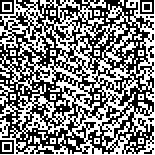姚军威,程阳,韦俏丽,等.贴扎对慢性踝关节不稳的男性篮球运动员正向和侧向跳跃时踝关节运动学特征的影响[J].中华物理医学与康复杂志,2023,45(1):53-60
扫码阅读全文

|
| 贴扎对慢性踝关节不稳的男性篮球运动员正向和侧向跳跃时踝关节运动学特征的影响 |
|
| |
| DOI:10.3760/cma.j.issn.0254-1424.2023.01.010 |
| 中文关键词: 贴扎 慢性踝关节不稳 踝关节 运动学 |
| 英文关键词: Taping Ankle instability Ankle joint Kinematics |
| 基金项目:国家重点研发计划“科技冬奥”专项(2018YFF0300904);武汉体育学院东湖学者计划;武汉体育学院“十四五”湖北省优势特色学科(群)(鄂教研[2021]5号);2021年度武汉体育学院校级科研团队资助(21KT02) |
|
| 摘要点击次数: 4467 |
| 全文下载次数: 5311 |
| 中文摘要: |
| 目的 观察贴扎对慢性踝关节不稳的男性篮球运动员正向和侧向跳跃时踝关节运动学特征的影响。 方法 采用Vicon三维运动捕捉系统和Kistler三维测力台采集29例慢性踝关节不稳的男性篮球二级运动员贴扎与未贴扎条件下的正向和侧向跳跃落地数据,包括受试者未贴扎和贴扎条件下正向跳跃落地动作和侧向跳跃落地动作踝关节触地(TD)前200 ms、TD前150 ms、TD前100 ms、TD前50 ms、TD时、TD后50 ms、TD后100 ms、TD后150 ms和TD后200 ms的背屈/跖屈角度、外翻/内翻角度和外旋/内旋角度,以及背屈/跖屈角速度、外翻/内翻角速度、外旋/内旋角速度。采用Visual 3D三维运动分析软件对所得数据进行建模计算,并采用SPSS 25.0版统计学软件对本研究所得数据进行分析。 结果 正向跳跃落地,受试者贴扎后TD前50 ms和TD的踝关节跖屈角度较未贴扎时分别减少了3.27°和2.70°,TD前50 ms的踝关节内翻角度较未贴扎时减少了2.13°,TD前200 ms和TD前150 ms的踝关节外旋角度较未贴扎时分别减少了2.59°和2.17°, TD后100 ms的落地踝关节外旋角度较未贴扎时减少了1.59°,差异均有统计学意义(P<0.05)。侧向跳跃落地,受试者贴扎后TD前50 ms和TD的踝关节跖屈角度较未贴扎时分别减少了1.94°和3.23°,TD前50 ms和TD的踝关节内翻角度较未贴扎时分别减少了2.86°和2.87°,TD前200 ms和TD前150 ms的踝关节外旋角度较未贴扎时分别减少了0.93°和2.36°,差异均有统计学意义(P<0.05)。正向跳跃落地,受试者贴扎后TD和TD后100 ms的踝关节背屈角速度较未贴扎时分别减少了58.47°/s和28.39°/s,差异均有统计学意义(P<0.05)。侧向跳跃落地,受试者贴扎后TD的踝关节背屈角速度较未贴扎时减少了20.52°/s,踝关节内翻角速度较未贴扎时增加了49.69°/s,差异均统计学意义(P<0.05);TD后50 ms时,受试者贴扎后的踝关节外翻角速度较未贴扎时减少了30.28°/s,差异亦有统计学意义(P<0.05)。 结论 踝关节贴扎可以改变CAI男性篮球运动员正向和侧向跳跃落地动作时踝关节的角度和角速度,踝关节贴扎可使正向和侧向跳跃落地TD前50 ms和TD的踝关节跖屈和内翻角度减小,使正向跳跃落地TD的踝关节背屈角速度减小,使侧向跳跃落地TD的踝关节角速度增加。 |
| 英文摘要: |
| Objective To observe the effect of taping on the kinematic characteristics of the ankle joint during forward and lateral jumps by male basketball players with chronic ankle instability (CAI). Methods A Vicon 3D motion capture system and a Kistler 3D ergometer were used to collect data describing the landing data with or without taping from forward and lateral jumps of 29 male basketball players with CAI. The landing data included the dorsiflexion and plantarflexion angles, valgus and inversion angles and external and internal rotation angles. Dorsiflexion or plantarflexion angular velocity was also recorded along with valgus or inversion angular velocity and external or internal rotation angular velocity 200ms, 150ms, 100ms and 50ms before and after touchdown. The data obtained were modeled using three-dimensional motion analysis software, and then analyzed. Results Taping reduced the ankle plantarflexion in landing from a forward jump by 3.27° 50ms before landing and by 2.70° at touchdown. The ankle inversion angle was reduced 2.13° 50ms before touchdown, while the angle of external rotation decreased by 2.59° 200ms before touchdown and 2.17° 150ms before. Moreover, the angle of external rotation 100ms after landing was reduced by a significant 1.59° compared with that without taping. In lateral jumps taping reduced the average ankle plantarflexion angle by 1.94° 50ms before landing and 3.23° at touchdown compared with no taping. Ankle inversion was reduced significantly by 2.86° 50ms before landing and by 2.87° at touchdown. External rotation was a significant 0.93° less 200ms before landing and 2.36° smaller 150ms before touchdown. In the forward jump landing, taping reduced the average angular velocity of ankle dorsiflexion on landing by a significant 58.5°/s and by 28.39°/s 100ms later. In the lateral jump landings the average ankle dorsiflexion velocity decreased by significant 20.5°/s with taping, but the valgus velocity increased by 49.7°/s compared with no taping. However, 50ms after touchdown the speed of external rotation with taping was 30.3°/s slower than without taping. Conclusions Ankle taping can modify ankle rotation angles and angular velocities during landing from jumps. This is particularly helpful for basketball players with CAI. |
|
查看全文
查看/发表评论 下载PDF阅读器 |
| 关闭 |